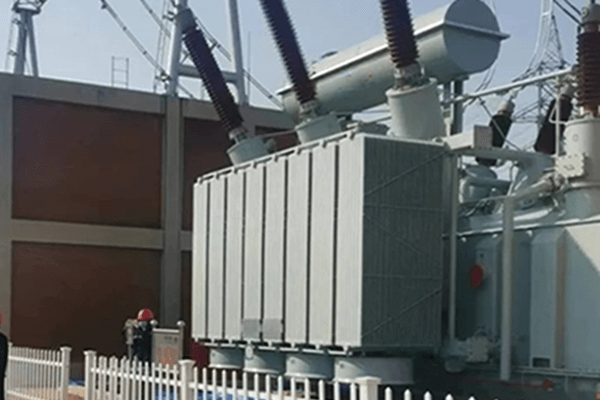There are many reasons why the distribution transformer temperature is too high. It may be due to the transformer's own fault or external reasons.

First, the cause of the transformer itself failure
When the heat generation and heat dissipation reach a balanced state during the operation of the power transformer, the temperature of each part tends to be stable. If under the same conditions, the oil temperature is more than 10°C higher than usual, or the load remains unchanged, but the temperature continues to rise, it can be considered that a fault has occurred inside the transformer.
1. Poor contact of the tap changer ,Due to insufficient contact point pressure or dirty contact during the operation of the tap changer, the contact resistance increases. The increase in contact resistance will increase the temperature of the contact point and cause heat. Especially after the tap is switched and the transformer is overloaded, it is easier to cause the tap changer to have poor contact and heat.
Poor contact of the tap changer can be judged by the frequent action of light gas, and by taking oil samples for testing, it can be found that the poor contact of the tap changer causes the oil flash point to drop rapidly; in addition, the contact condition of the tap changer can be determined by measuring the DC resistance value of the coil.
2. Short circuit between turns of the winding coil, Due to the insulation damage between several adjacent turns of the coil, a closed short-circuit loop will appear. At the same time, the number of turns of the coil of this phase is reduced, and the short-circuit circulating current generates high heat, which makes the temperature rise of the transformer too high. In severe cases, the transformer will be burned.
There are many reasons for the short circuit between coil turns, such as the rough process during coil manufacturing causes mechanical damage to the insulation; high temperature causes insulation aging; under the action of electric force, the wire turns are axially displaced, and the insulation is worn, etc., but the main reason for the development of short circuit between turns is overvoltage and overcurrent. Severe short circuit between turns causes the oil temperature to rise, and the oil at the short-circuit turn is like boiling, and a "gurgling" sound can be heard. When taking oil samples for testing, the oil quality deteriorates, and the light gas action develops into heavy gas action. At this time, the method of measuring DC resistance can also be used to test and find the short circuit between turns.
3. Short circuit between silicon steel sheets in the core. Due to external force damage or insulation aging, the insulation between silicon steel sheets is damaged, the eddy current increases, and local overheating occurs. In addition, the insulation damage of the through screw is also the cause of eddy current. In mild cases, it causes local heating, and the increase of transformer oil temperature is generally not observed; in severe cases, the core is overheated, the oil temperature rises, the light gas frequently operates, the flash point of the oil decreases, and in severe cases, the heavy gas operates.
4. Lack of oil or blockage in the heat dissipation pipe.
Second. External reasons for excessive transformer temperature
1. Severe overload During operation, the hysteresis loss, eddy current loss and copper loss of the iron core of the transformer are converted into heat, causing the temperature to rise. Iron loss is a basically constant loss and is related to the structure of the transformer, so it cannot be reduced or eliminated during operation, while copper loss changes with load. When it is severely overloaded, the increase in copper loss causes the transformer temperature to rise.
2. The air inlet and outlet of the transformer room are blocked or seriously dusty. The air inlet and outlet of the transformer room are the channels for air convection during transformer operation. Once blocked or seriously dusty, the heating conditions of the transformer do not change but the heat dissipation conditions become worse, and the heat cannot be dissipated to the surrounding in time, causing the temperature of the transformer to rise during operation. Measure the air temperature at a distance of 1.5m to 2m from the transformer oil tank and at a height of half the height of the oil tank. If the measured temperature is 8 to 10°C higher than the ambient air temperature, the ventilation of the transformer room should be improved.
3. Failure of transformer cooling circulation system. In addition to using heat pipes to dissipate heat, power transformers also have other cooling methods such as forced air cooling, forced oil circulation, and water circulation. Once the cooling system fails or the heat dissipation conditions are poor, the temperature of the transformer in operation will rise.